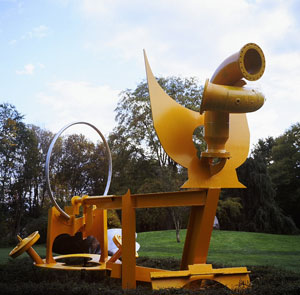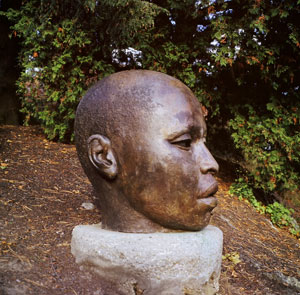If you are new to film photography, you probably want to start out with a 35mm system. See my SLR Primer for details on building one. That primer specifically focusses on manual focus Konica SLR cameras, but can pretty much apply to any manual focus camera. As I said on my main photography page, there is really no substitute for learning about photography with a manual focus camera.
 If you're looking to make 16x20 or larger prints, then medium format is
the next step for you. If you think medium format means big bucks, then
think again. With the digital age means prices for film gear are coming
down as the market gets innudated with used gear. I have found success
with Twin Lens Reflex (TLR) cameras (e.g., the Rolleiflex) and the SLR
cameras (e.g., the Hasselblad). TLRs are cameras with a viewing lens
(what you see in the finder) and a taking lens (what the film sees when
the shutter release is depressed). I started out with a YashicaMat 124
that I got via Ebay and had some shutter problems. I also got a real
cheap Minolta Autocord via Ebay. It had a broken focussing knob. I only
ran two rolls of film through each and found the whole experience
dissapointing. I ended up not getting them serviced and instead I
upgraded to a Rolleiflex 3.5E Planar. The Rolleiflex far surpases the
other TLR models in terms of craftsmanship. I decided that my philosophy
with 35mm cameras should hold for medium format cameras, so I bought
mine through renowned Rollei repair person Harry Fleenor (at Oceanside Camera). He did a
CLA, complete shutter refurbishment, and put in a super bright Maxwell
screen with split image focussing. So when I received it (just like
when I received my 35mm Konica N-T3s from Greg Weber), I knew I could
shoot with confidence. I was right.
If you're looking to make 16x20 or larger prints, then medium format is
the next step for you. If you think medium format means big bucks, then
think again. With the digital age means prices for film gear are coming
down as the market gets innudated with used gear. I have found success
with Twin Lens Reflex (TLR) cameras (e.g., the Rolleiflex) and the SLR
cameras (e.g., the Hasselblad). TLRs are cameras with a viewing lens
(what you see in the finder) and a taking lens (what the film sees when
the shutter release is depressed). I started out with a YashicaMat 124
that I got via Ebay and had some shutter problems. I also got a real
cheap Minolta Autocord via Ebay. It had a broken focussing knob. I only
ran two rolls of film through each and found the whole experience
dissapointing. I ended up not getting them serviced and instead I
upgraded to a Rolleiflex 3.5E Planar. The Rolleiflex far surpases the
other TLR models in terms of craftsmanship. I decided that my philosophy
with 35mm cameras should hold for medium format cameras, so I bought
mine through renowned Rollei repair person Harry Fleenor (at Oceanside Camera). He did a
CLA, complete shutter refurbishment, and put in a super bright Maxwell
screen with split image focussing. So when I received it (just like
when I received my 35mm Konica N-T3s from Greg Weber), I knew I could
shoot with confidence. I was right.
Medium format TLRs produce negatives or transparencies 6cm x 6cm in size. This is a square format found on classic cameras like the Hasselblad. It's commonly called just "6 by 6" (in cm) or "2 and a quarter" (in inches). 6x6 cameras will give you 12 frames on a "120" format roll, and a few allow you to use a "220" format roll. But stick with the 120 because 220 film is harder to find in 2006.
There is a major first decision you need to make when buying a Rollei TLR. It is whether you want to go with an older Schneider Xenar or Zeiss Tessar 4 element lens design or go with a Schneider Xenotar or Zeiss Planar 5 element lens design. I am going to restrict my comments to the 6x6 format. That excludes the 1930s-1950s Baby Rolleiflexes. Also in the 1930s the Rolleicords came out. There were many models of these. If you are going to buy a Rolleicord (lower cost) then stick to one with a Xenar of Tessar lens. These give you an image that is reputadly soft around the edges and soft wide open. Some photographers I have talked to actually prefer this softness. I do not. If you are like me, and you want a super sharp lens rivalling anything on modern cameras, then stick with the Rolleiflex models with Xenotar or Planar lenses.
The Rolleiflex 3.5E, E2, E3, 3.5F, 2.8C, 2.8D, 2.8E, 2.8E2, 2.8E3, 2.8F, 2.8FX, and 2.8GX all have Xenotar or Planar lenses. The 2.8's are 80mm and the 3.5's are 75mm. In practice, there's not much of a difference between the 2.8's and 3.5's. I saved some money by going with a 3.5 and I never need the extra speed. And according to everyone, there's no difference between the Xenotar or Planar, though the Planar tends to command higher prices on the used market. The later models, of course, will command higher prices. So, I don't see the need to go with newer models. Your decision should be based on condition of the camera and not on which model.
 All of these allow 35mm use with a Rolleikin (though why would anyone do
this I don't know) and come with or without exposure meters. I prefer
not to have the meter since I want an all mechanical machine without an
old unreliable selenium meter plus I take my time shooting with my
Rolleiflex so I meter carefully with my Shepherd Polaris
incident/reflected meter.
All of these allow 35mm use with a Rolleikin (though why would anyone do
this I don't know) and come with or without exposure meters. I prefer
not to have the meter since I want an all mechanical machine without an
old unreliable selenium meter plus I take my time shooting with my
Rolleiflex so I meter carefully with my Shepherd Polaris
incident/reflected meter.
All of the 3.5 models I talked about use a Bayonet II lens fitting. All of the 2.8 models use the Bayonet III lens fitting. Lens hoods and filters have to fit these settings. There are work-arounds I have seen (like a Bay to threaded adapter), but I don't like these. If you wait on Ebay, you will find both genuine hoods, filters (which I don't use on the Rolleiflex), lens caps, and a Rolleifix. I always shoot with the hood on the taking lens, store the camera with the lens cap, and use a Rolleifix. A Rolleifix is what you will need to attach quickly release the Rolleiflex from the tripod. You probably will need a 3/8"-16 to 1/4"-20 bushing to attach the Rolleifix to your tripod. Search here at B&H.
Where to buy? I recommend buying from Harry Fleenor, but if you don't, make sure you have him CLA and overhaul your camera. Figure this into your cost. You can find used Rolleiflexes on Ebay, but aside from accessories, I would recommend against doing this. Other options are KEH, B&H, and Adorama. Then ship it off to Harry before you use it and spend the 100+ bucks to have a bright Maxwell screen put in.
The Rolleiflexes come with ever-ready cases. But they are such a pain. After much searching I found that the LowePro Nova Mini is perfect. It fits the TLR, strap and my meter perfectly snug. The hood, Rolleifix and film fit in the pockets. There's no wasted space. For straps, you can find the leather straps with scissor attachment. I chose to go with an Op/Tech Pro Loop strap. It doesn't have the scissor attachment, but it works quite well and it feels better hanging on my neck than a thin leather strap would. Harry says I can get the scissor attachments rivetted to my modern strap by a leather craftsman. I will probably do that this winter.
For film, see my recommendations on my Film Primer, which is the same for the TLRs and SLRs. Basically I use Fuji Astia transparency (slide), Fuji Pro 160S color negative, and Ilford XP2 black and white C41 films and sometimes TMAX 100. I take my film to a Boston Pro Lab and always have the negatives or transparencies cut and sleeved. I also always have them scanned for Web display on a PhotoCD.
Rollei also made Tele and Wide-angle TLRs though these aren't nearly as common and tend to be expensive. Instead of going that route to get other focal lengths, I decided to get a used Hasselblad 500C/M with 160mm portrait lens and 50mm wide angle lens.
If you want more information than I have given you here, then you should get Ian Parker's books. Search here on Amazon. Also check out the Rollei links on the bottom of my home Photography Pages.